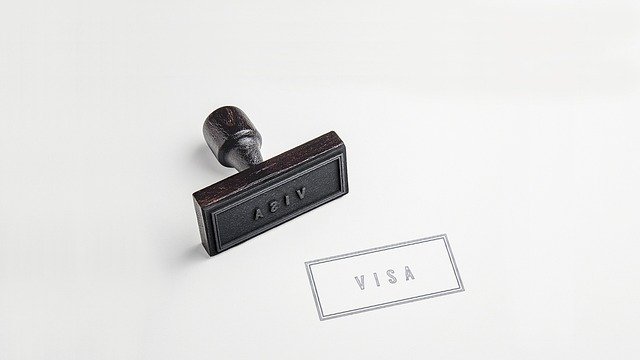What To Know About Canada Permanent Residency Programs - An Essential Guide
Canada's permanent residency programs offer pathways for immigrants to establish long-term legal status and eventually pursue citizenship. With multiple immigration streams available, understanding the requirements, processes, and timelines becomes crucial for prospective applicants. From federal economic programs to provincial nominations, each pathway has distinct eligibility criteria and documentation requirements that determine application success rates.

What To Know About Canada Permanent Residency Programs
Canada operates several permanent residency programs designed to attract skilled workers, entrepreneurs, and family members. The Express Entry system manages three federal economic programs: the Federal Skilled Worker Program, Canadian Experience Class, and Federal Skilled Trades Program. Provincial Nominee Programs allow individual provinces to select candidates based on local economic needs. Additionally, family class immigration enables Canadian citizens and permanent residents to sponsor eligible relatives.
The Comprehensive Ranking System scores Express Entry candidates based on factors including age, education, language proficiency, work experience, and Canadian connections. Higher scores increase invitation chances during regular draws. Quebec operates its own immigration system with unique requirements and processes separate from federal programs.
Learn About Canada Permanent Residency Programs Through Different Pathways
Understanding each program’s specific focus helps applicants identify suitable options. The Federal Skilled Worker Program targets professionals with foreign work experience and strong language skills. The Canadian Experience Class serves temporary workers and international graduates with Canadian experience. Provincial Nominee Programs address regional labor market needs, often requiring job offers or connections to specific provinces.
Start-up visa programs attract entrepreneurs with innovative business ideas supported by designated organizations. Self-employed persons programs target farmers and artists who can contribute to Canada’s cultural or agricultural sectors. Caregiver programs provide pathways for individuals with experience caring for children, elderly, or disabled persons.
Understanding Canada’s Permanent Residency Landscape
Canada’s immigration landscape prioritizes French-English bilingualism, with additional points awarded for proficiency in both official languages. Recent policy changes have emphasized Francophone immigration, particularly outside Quebec, to support French-speaking communities across Canada. The government regularly adjusts program requirements and processing procedures based on economic conditions and demographic needs.
Regional economic immigration pilots target specific communities with unique demographic challenges. The Rural and Northern Immigration Pilot connects skilled workers with participating communities experiencing population decline. The Atlantic Immigration Pilot addresses labor shortages in maritime provinces through employer-driven recruitment.
Eligibility Requirements and Documentation
Meeting minimum eligibility requirements represents just the first step in permanent residency applications. Language testing through approved organizations like IELTS or CELPIP demonstrates English proficiency, while TEF or TCF tests assess French skills. Educational Credential Assessment validates foreign degrees and diplomas according to Canadian standards.
Medical examinations by panel physicians ensure applicants meet health requirements. Police certificates from all countries where applicants lived for six months or more establish admissibility. Financial documentation proves applicants can support themselves and accompanying family members without requiring social assistance.
Work experience documentation requires detailed employment records, including job duties, hours worked, and supervisor contact information. Reference letters must align with National Occupational Classification codes to verify skill level and type.
Application Process and Timeline
Express Entry profiles remain active for twelve months, during which candidates may receive invitations to apply for permanent residency. Following invitation receipt, applicants have ninety days to submit complete applications with supporting documents. Immigration, Refugees and Citizenship Canada aims to process most Express Entry applications within six months.
Provincial Nominee Program timelines vary significantly between provinces and nomination streams. Initial provincial applications may take several months for processing before successful candidates can apply federally. Family class sponsorship applications typically require longer processing times, particularly for spouse and dependent children applications from certain countries.
Processing delays can occur due to incomplete documentation, background verification requirements, or high application volumes. Regular status updates through online accounts help applicants track application progress and respond to additional document requests promptly.
| Immigration Program | Processing Time | Application Fee | Key Requirements |
|---|---|---|---|
| Express Entry | 6 months | CAD $1,325 | Language tests, ECA, work experience |
| Provincial Nominee Program | 2-6 months (provincial) + 6 months (federal) | CAD $1,325 + provincial fees | Provincial nomination, varies by stream |
| Family Class Sponsorship | 12-24 months | CAD $1,040-$1,325 | Eligible relationship, financial support |
| Start-up Visa Program | 12-16 months | CAD $1,325 | Business plan, designated organization support |
Prices, rates, or cost estimates mentioned in this article are based on the latest available information but may change over time. Independent research is advised before making financial decisions.
Canada’s permanent residency programs continue evolving to address changing economic needs and demographic trends. Success requires careful program selection, thorough preparation, and attention to documentation requirements. While processing times and requirements may vary, understanding these fundamental aspects helps applicants navigate the immigration process effectively and make informed decisions about their Canadian immigration journey.




